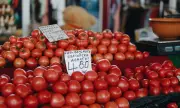Всички
Частни
Други гр. София, 18 354

По-скъпо! Нов ръст в цените на основни хранителни стоки на борсите през седмицата
преди 2 часа и 17 минути

Срив в системата! Очаквания за закъснения на полети в САЩ
преди 52 минути
Категории:
Текуща категория: Обяви за Книги, канцеларски материали
Оценете обявите за “Книги, канцеларски материали”
Оценка 4.6 от 170 гласа.
Населени места:
Вход
Регистрация




































































